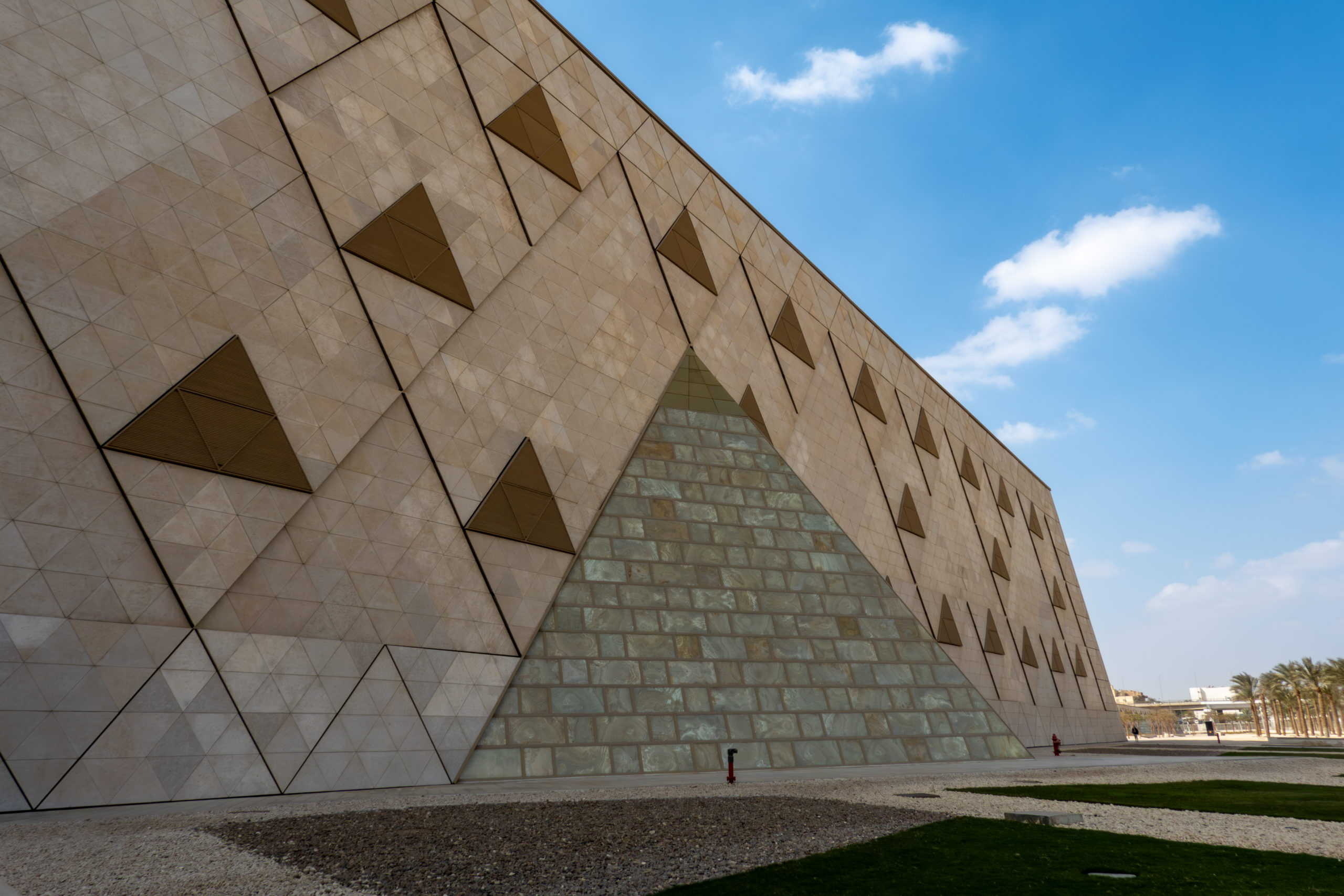After years of endless waiting and repeatedly postponed promises, the Egyptian government has announced a new date for the complete opening of the pharaonic Grand Egyptian Museum. It will be November 1st, 2025, and this time, authorities seem determined to keep their commitment. Prime Minister Mostafa Madbouly confirmed this decision after receiving approval from President Abdel Fattah al-Sisi, following a ministerial meeting where final details were finalized.
This announcement ends a saga of delays that lasted more than twenty years. Construction of the museum, initially scheduled to be completed in 2013, had been delayed by a succession of crises: the 2011 revolution, economic turbulence, the global pandemic, not to mention recent geopolitical tensions in the region. The last planned date, July 3rd, 2025, had been abandoned in the face of escalating Middle East conflict.
An Architectural Giant Facing the Pyramids
The Grand Egyptian Museum stands on an area of nearly 500,000 square meters, with 45,000 dedicated to exhibitions. The building designed by Irish firm Heneghan Peng follows the topography of the Giza plateau. Its facade, composed of thousands of alabaster triangles, evokes the nearby pyramids while asserting its contemporary identity.
In the monumental hall, the statue of Ramesses II, eleven meters tall and weighing more than 80 tons, already welcomes visitors who have been able to discover the first twelve galleries opened since last October. This colossal figure, once exposed to pollution in downtown Cairo, has regained its splendor after meticulous restoration. The main staircase, a true architectural feat rising over six levels, offers panoramic views of the pyramids while displaying dozens of monumental sculptures.
Tutankhamun’s Treasures Finally United
For the first time since their discovery more than a century ago, all 5,200 objects from Tutankhamun’s tomb will be displayed in their entirety. This collection, which occupied only 700 square meters in the old museum on Tahrir Square, will now benefit from 7,000 square meters of exhibition space. The famous solid gold funeral mask, weighing more than ten kilograms and inlaid with lapis lazuli, naturally constitutes the centerpiece of this exceptional ensemble.
Beyond the mask, visitors will be able to admire the royal chariots, the nested coffins including the innermost one in solid gold, the famous meteoritic iron dagger, as well as thousands of everyday objects intended to accompany the young pharaoh into the afterlife. Immersive technologies will virtually reconstruct Howard Carter’s discovery of the tomb in 1922, offering visitors an experience that goes beyond simply contemplating the objects.
The museum will house a total of more than 100,000 pieces covering the entire history of Egyptian civilization, from prehistory to the Greco-Roman period. Khufu’s solar barque, discovered in 1954 and meticulously restored, testifies to the religious beliefs and craftsmanship of ancient builders. Collections from major sites like Saqqara, Tanis, and the Valley of the Kings will trace several millennia of pharaonic history.
Beyond its museum function, the complex includes a thousand-seat auditorium, an IMAX 3D cinema, commercial spaces, restaurants, and even a museum dedicated to children. This diversification aims to transform the site into a true cultural and tourist destination, capable of accommodating up to 15,000 daily visitors. The government is banking on five million annual visitors, an ambitious goal that could generate substantial economic benefits for Egypt’s tourism sector, which recorded $13.6 billion in revenue last year.
The inauguration ceremony on November 1st, 2025 promises to be a major diplomatic event. Egyptian authorities are preparing a celebration worthy of the stakes, inviting heads of state and international personalities. The event should mark Egypt’s return to the global cultural scene and affirm its role as guardian of universal heritage. Transportation infrastructure has been modernized for the occasion: new roads, extension of the Cairo metro with a fourth line, rapid bus network, and commercial developments.

